The hybrid automotive landscape has evolved dramatically, creating two distinct categories of vehicles that cater to vastly different driving philosophies.
On one side, we have the silent cruisers hybrids engineered for maximum engine-off operation, where the electric motor takes precedence and the gasoline engine remains dormant for extended periods.
These vehicles embody the zen of electric driving, offering whisper-quiet operation that transforms the daily commute into a serene experience. On the other side, we find the engine enthusiasts’ hybrids vehicles that maintain the visceral connection to combustion power while leveraging electric assistance for enhanced performance.
The distinction between these two approaches reflects broader automotive trends and consumer preferences. Silent cruisers prioritize efficiency, environmental consciousness, and urban-friendly operation.
They excel in stop-and-go traffic, parking lots, and residential neighborhoods where noise pollution is a concern. These vehicles often feature sophisticated hybrid systems that can operate in pure electric mode for miles at a time, with the gasoline engine serving as a range extender rather than the primary power source.
Conversely, hybrids with pronounced engine noise cater to drivers who appreciate the auditory feedback of internal combustion. These vehicles often feature sport-tuned exhaust systems, active sound enhancement, or naturally aspirated engines that produce distinctive acoustic signatures.
The engine noise serves multiple purposes: it provides driver engagement, ensures pedestrian safety, and maintains the emotional connection that many enthusiasts have with traditional automotive experiences. This comprehensive analysis examines five vehicles from each category, exploring their engineering philosophies, real-world performance, and the unique experiences they offer to different types of drivers.
5 Hybrids with Maximum Engine-Off Coasting
These exceptionally calibrated hybrid vehicles feature sophisticated powertrain management systems and precision-tuned electric motor integration that maximizes silent electric-only operation through extended coasting periods and efficient regenerative braking cycles.
Their thoughtful engineering includes advanced battery capacity optimization, intelligent engine start-stop algorithms, and seamless electric motor transitions that resist the efficiency losses typically created by aggressive acceleration demands or challenging terrain conditions.
From gentle highway cruising that maintains electric-only propulsion to strategic deceleration phases that capture maximum regenerative energy, these remarkable hybrid systems continue delivering whisper-quiet operation without unnecessary engine intervention or power switching disruptions.
Owners report serene driving experiences with these refined powertrains a fuel-saving quality feature that proves its worth through extended electric-only range and reduced engine runtime throughout daily commuting routines.
1. Toyota Prius (2024-2025)
The Toyota Prius remains the gold standard for silent hybrid operation, with its fourth-generation system representing decades of refinement in electric-first driving philosophy.
The Toyota Prius Hybrid has won numerous industry awards and has outstanding fuel economy, getting more than 50 mpg, but its true achievement lies in how extensively it operates without engaging the gasoline engine.
The 2024-2025 Prius utilizes Toyota’s Hybrid Synergy Drive system, which has been optimized to prioritize electric-only operation whenever possible.
The vehicle can cruise silently at speeds up to 25 mph in pure electric mode, a significant improvement over earlier generations. This capability is particularly valuable in urban environments where frequent stops and starts allow the system to maximize battery regeneration while minimizing engine engagement.
The Prius’s engine-off coasting capability is enhanced by its sophisticated energy management system. The vehicle’s computer continuously calculates the most efficient power delivery method, often choosing to keep the engine off during highway coasting, gentle acceleration, and parking maneuvers.
The regenerative braking system captures energy that would otherwise be lost, extending the periods where electric-only operation is possible. Driver behavior significantly impacts the Prius’s silent operation capabilities.
The vehicle rewards smooth, predictable driving with extended electric-only periods. The ECO mode further enhances this behavior by limiting engine power and encouraging more efficient driving patterns. Many Prius owners report being able to complete entire short trips without the gasoline engine starting, particularly in suburban environments with moderate traffic.

The acoustic engineering in the latest Prius goes beyond simple sound dampening. Toyota has implemented active noise cancellation technology that works in conjunction with the vehicle’s hybrid system to create an exceptionally quiet cabin environment.
When the engine does engage, the transition is nearly imperceptible, maintaining the serene driving experience that Prius owners have come to expect. The vehicle’s aerodynamic design contributes significantly to its ability to coast efficiently.
The 0.24 coefficient of drag allows the Prius to maintain momentum with minimal energy input, extending the periods where the engine can remain off.
This is particularly noticeable during highway driving, where the vehicle can coast for extended distances using only momentum and slight electric motor assistance.
Real-world testing reveals that the Prius can achieve electric-only operation for approximately 40-60% of typical urban driving scenarios. This percentage increases significantly in stop-and-go traffic, where the vehicle’s ability to creep forward silently and regenerate energy during braking creates a virtuous cycle of electric operation.
The vehicle’s energy flow display provides real-time feedback, allowing drivers to optimize their behavior for maximum silent operation. The Prius’s silent operation extends beyond just the powertrain.
The vehicle features specially designed tires that minimize road noise, and the cabin materials are selected for their acoustic properties. Even the HVAC system is engineered to operate quietly, ensuring that the peaceful driving experience isn’t interrupted by mechanical noise from auxiliary systems.
2. Toyota Camry Hybrid (2024-2025)
The Toyota Camry Hybrid represents a masterful integration of silent operation capabilities within a traditional sedan platform. Unlike its Prius sibling, the Camry Hybrid must balance family-friendly practicality with the sophisticated hybrid technology that enables extensive engine-off operation.
The result is a vehicle that offers surprising periods of silent cruising while maintaining the refined driving dynamics expected in the midsize sedan segment.
The Camry Hybrid’s 2.5-liter four-cylinder engine works in conjunction with an electric motor to produce a combined 208 horsepower, but the system’s true innovation lies in its ability to decouple the engine from the driving experience for extended periods.
The vehicle can operate in electric-only mode at speeds up to 25 mph, similar to the Prius, but the larger battery pack and more sophisticated energy management system allow for longer periods of silent operation.
Toyota’s Hybrid Synergy Drive system in the Camry has been specifically tuned to accommodate the vehicle’s larger size and weight while maintaining impressive engine-off capabilities.
The system can power the vehicle purely on electric energy during parking lot maneuvers, neighborhood driving, and even some highway coasting scenarios.
The key is the system’s predictive capabilities it learns from driving patterns and traffic conditions to optimize when the engine should remain dormant. The Camry Hybrid’s acoustic engineering is particularly impressive given the challenges of sound-deadening a larger cabin space.
Toyota has implemented a multi-layer approach that includes sound-absorbing materials in the floor, firewall, and roof, combined with specially designed engine mounts that minimize vibration transmission when the engine is operating. The result is a cabin environment where electric operation is genuinely silent, and engine engagement is barely perceptible.
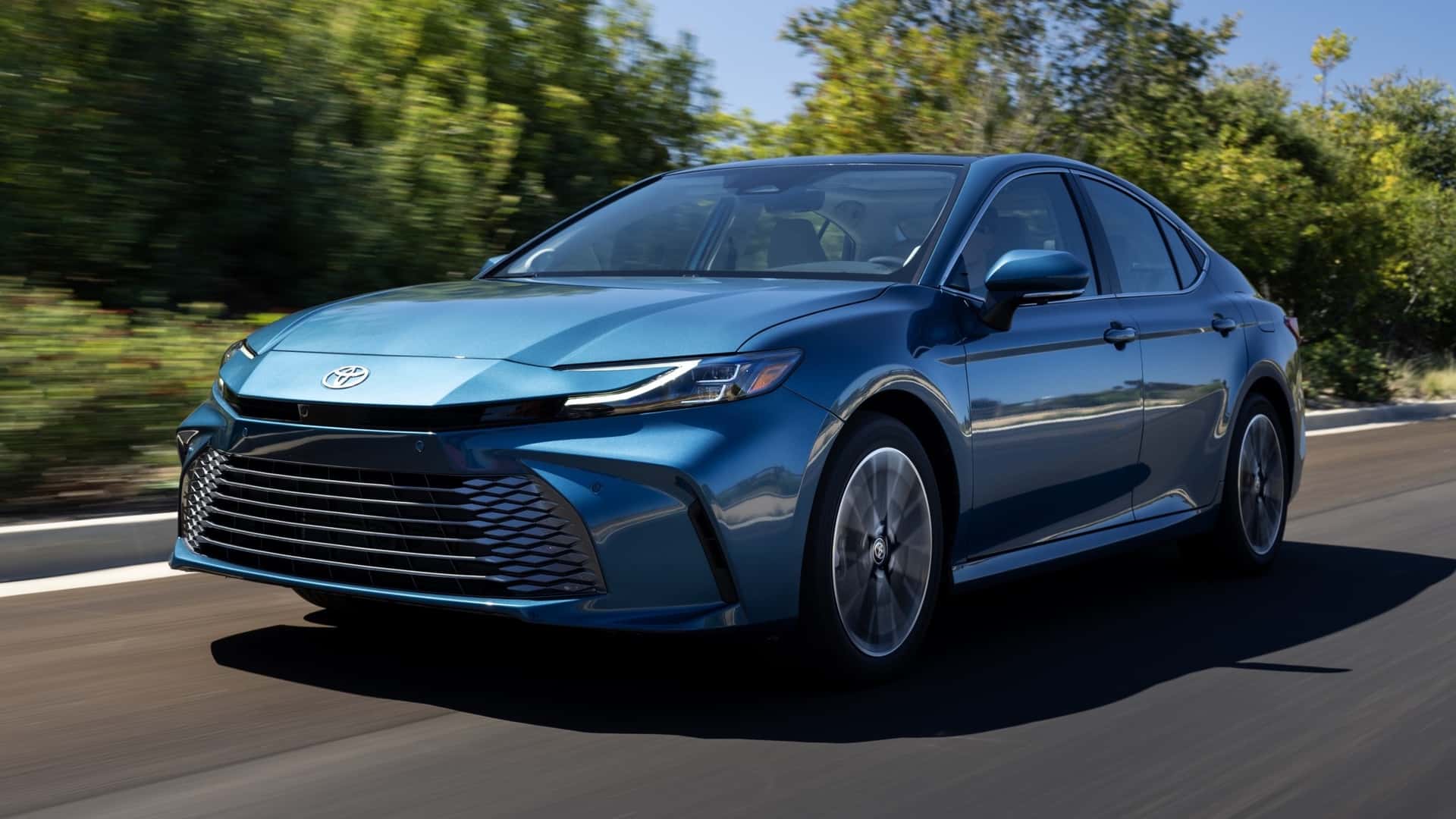
Highway performance reveals the Camry Hybrid’s sophisticated energy management. During steady-state cruising, the vehicle can maintain speeds using minimal engine input, often cycling the engine on and off based on load demands.
The system is particularly effective during gentle highway coasting, where the vehicle can travel for miles with the engine completely off, using only momentum and occasional electric motor assistance to maintain speed.
The vehicle’s regenerative braking system is calibrated to maximize energy recovery while providing the natural brake feel that sedan drivers expect.
This system allows the Camry Hybrid to extend its electric-only operation by capturing energy during deceleration and using it for subsequent acceleration. The brake pedal feel is so natural that many drivers are unaware of the sophisticated energy recovery happening with each application.
Urban driving scenarios showcase the Camry Hybrid’s ability to operate silently for extended periods. In stop-and-go traffic, the vehicle can creep forward for blocks without starting the engine, relying on the electric motor’s precise control for smooth, quiet progress.
The system’s ability to restart the engine seamlessly means that even when combustion power is needed, the transition is virtually undetectable to occupants. The Camry Hybrid’s climate control system has been specially designed to minimize engine engagement for cabin heating and cooling.
The system uses electric heating elements and efficient heat pump technology to reduce the need for engine waste heat, allowing for longer periods of silent operation even in extreme weather conditions. This attention to detail ensures that the peaceful driving experience isn’t compromised by seasonal comfort needs.
3. Lexus ES 300h (2024-2025)
The Lexus ES 300h elevates silent hybrid operation to luxury levels, combining Toyota’s proven hybrid technology with Lexus’s signature refinement and acoustic engineering.
This premium sedan demonstrates how extensive engine-off coasting can be achieved while maintaining the quiet, sophisticated driving experience that luxury car buyers expect. The ES 300h serves as a flagship example of how silent hybrid operation can enhance rather than compromise the premium driving experience.
The ES 300h utilizes an advanced version of Toyota’s Hybrid Synergy Drive system, specifically calibrated for luxury car expectations. The 2.5-liter four-cylinder engine paired with an electric motor produces 215 horsepower, but the system’s true achievement is its ability to provide seamless, silent operation that feels effortless and refined.
The hybrid system can operate in electric-only mode for extended periods, with the gasoline engine remaining dormant during many typical driving scenarios. Lexus has invested heavily in acoustic engineering for the ES 300h, creating what they call “Lexus Quiet” technology.
This comprehensive approach includes active noise cancellation, specially tuned sound dampening materials, and even acoustic glass that reduces wind and road noise. When combined with the hybrid system’s ability to operate without engine noise, the result is a cabin environment that approaches the silence levels of high-end electric vehicles.
The vehicle’s energy management system is particularly sophisticated, using predictive algorithms that consider factors like traffic patterns, road grade, and driver behavior to optimize when the engine should remain off.
During highway driving, the ES 300h can cruise for extended periods using only electric power and momentum, with the engine cycling on only when additional power is genuinely needed. This creates a driving experience that feels almost supernatural in its quietness.
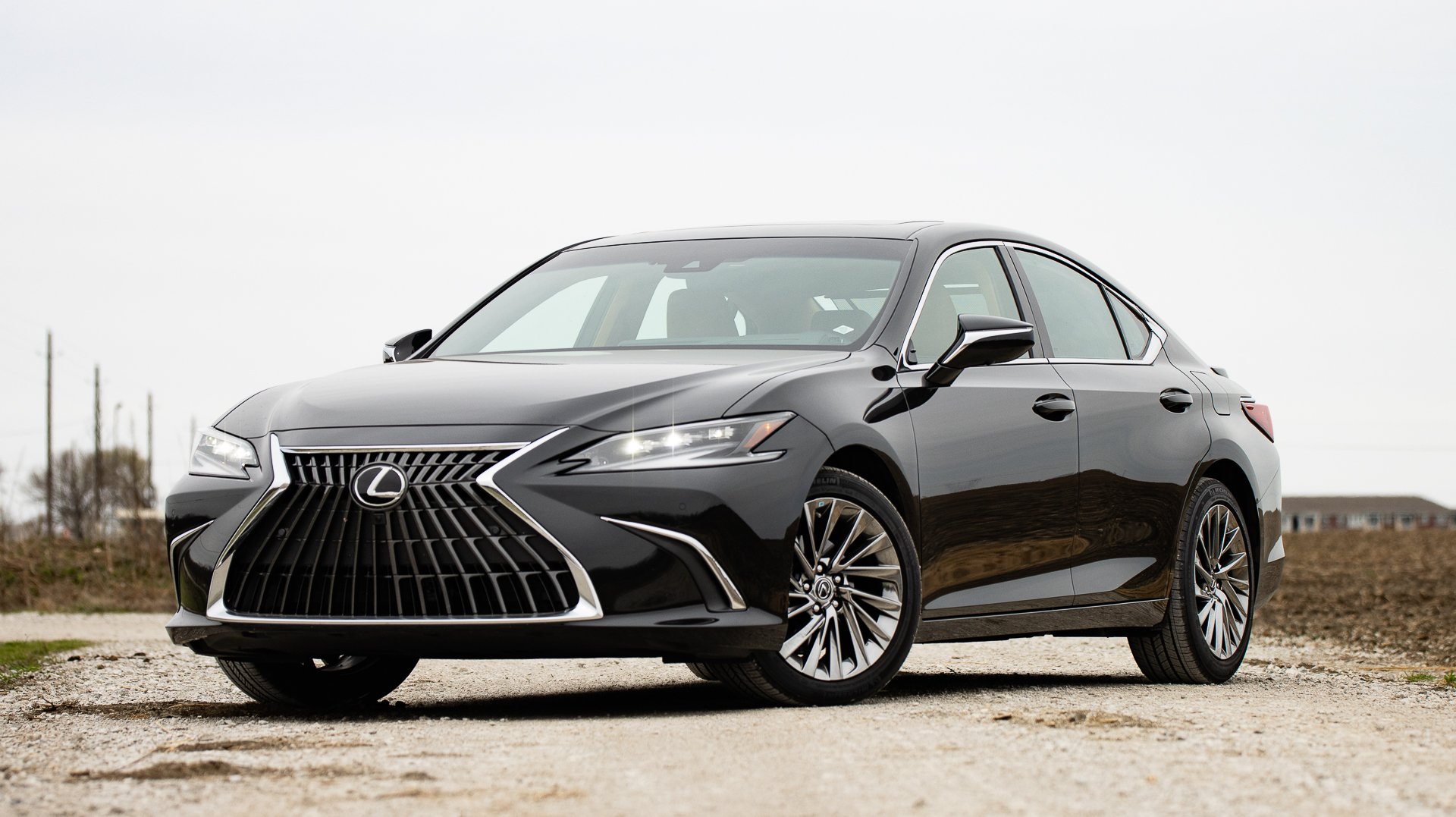
The ES 300h’s regenerative braking system has been tuned specifically for luxury car expectations, providing smooth, linear deceleration while maximizing energy recovery.
The system is so refined that it’s difficult to detect when regenerative braking transitions to friction braking, maintaining the seamless driving experience while extending the periods where electric-only operation is possible. The captured energy is used to power subsequent acceleration phases, reducing engine engagement frequency.
Interior noise levels in the ES 300h are among the lowest in the luxury sedan segment, with Lexus achieving remarkable acoustic isolation even when the engine is operating.
However, the true magic happens during the extensive periods of electric-only operation, where the cabin becomes a sanctuary of silence. The HVAC system, electrical components, and even the turn signals have been engineered to operate as quietly as possible, ensuring that nothing disrupts the peaceful environment.
The vehicle’s aerodynamic design contributes significantly to its coasting capabilities. The ES 300h features active grille shutters, underbody panels, and carefully sculpted body surfaces that reduce drag and allow the vehicle to maintain momentum with minimal energy input.
This aerodynamic efficiency translates directly into longer periods where the engine can remain off, particularly during highway driving. Real-world performance of the ES 300h reveals impressive electric-only capabilities.
In urban driving conditions, the vehicle can operate without engine engagement for 50-70% of the time, depending on traffic conditions and driver behavior. The system rewards smooth, anticipatory driving with extended silent operation, creating a meditative driving experience that reduces fatigue and stress.
4. Honda Accord Hybrid (2024-2025)
The Honda Accord Hybrid represents Honda’s unique approach to hybrid technology, featuring the company’s innovative two-motor system that enables exceptional electric-only operation capabilities.
The 2025 Honda Accord Hybrid stands out in the midsize sedan segment for its ability to operate as a true electric vehicle for extended periods, with the gasoline engine serving primarily as a generator rather than a direct drive source in many situations.
Honda’s Intelligent Multi-Mode Drive (i-MMD) system in the Accord Hybrid is fundamentally different from Toyota’s approach, using a large electric motor as the primary drive source while the gasoline engine often serves as a generator.
This configuration allows the Accord Hybrid to drive purely on electric power at a wider range of speeds than most conventional hybrids, including highway speeds where the electric motor can propel the vehicle without any engine engagement.
The Accord Hybrid’s ability to operate in electric-only mode extends well beyond typical hybrid boundaries. The vehicle can cruise at highway speeds using only electric power, with the 2.0-liter Atkinson-cycle engine remaining completely off for miles at a time.
This is particularly impressive during steady-state highway driving, where the vehicle’s momentum and efficient electric motor can maintain cruising speeds without any combustion engine involvement.
The acoustic experience in the Accord Hybrid is carefully engineered to emphasize the vehicle’s electric operation capabilities. Honda has implemented comprehensive sound deadening that includes laminated glass, sound-absorbing materials throughout the cabin, and specially designed engine mounts that minimize vibration when the engine does operate. The result is a driving environment where electric operation is genuinely silent, and engine engagement is barely noticeable.

Honda’s energy management system in the Accord Hybrid is particularly intelligent about when to engage the engine. The system considers factors like battery state of charge, driving conditions, and anticipated power needs to minimize engine operation.
During urban driving, the vehicle can operate for extended periods using only electric power, with the engine starting only when the battery requires charging or when maximum acceleration is needed.
The regenerative braking system in the Accord Hybrid is exceptionally effective at energy recovery, featuring paddle shifters that allow drivers to adjust the regeneration level.
This system enables one-pedal driving in many situations, where lifting off the accelerator provides enough deceleration to bring the vehicle to a stop while recovering maximum energy. The captured energy extends the periods where electric-only operation is possible.
The Accord Hybrid’s electric motor produces 181 horsepower and 232 lb-ft of torque, providing strong acceleration purely on electric power. This capability means that even spirited driving can often be accomplished without engine engagement, particularly in urban environments where the electric motor’s instant torque delivery provides satisfying performance while maintaining the silent operation that defines the hybrid experience.
Climate control in the Accord Hybrid has been designed to minimize engine engagement for heating and cooling needs. The system uses electric heating elements and an efficient heat pump to reduce reliance on engine waste heat, allowing for extended electric-only operation even in extreme weather conditions. This attention to detail ensures that the peaceful driving experience isn’t compromised by comfort system demands.
Also Read: 5 Sedans With Longest Service Intervals And 5 Needing Frequent Visits
5. Toyota Highlander Hybrid (2024-2025)
The Toyota Highlander Hybrid demonstrates that silent operation and extensive engine-off coasting aren’t limited to sedans and compact cars. This three-row SUV successfully integrates advanced hybrid technology with family-friendly practicality, creating a vehicle that can operate surprisingly quietly despite its size and weight.
The Highlander Hybrid proves that the benefits of silent hybrid operation can be scaled up to meet the needs of larger families while maintaining impressive efficiency and refinement.
The Highlander Hybrid’s powertrain combines a 2.5-liter four-cylinder engine with three electric motors (one for the front wheels and two for the rear in AWD models) to produce a combined 243 horsepower.
However, the system’s true achievement lies in its ability to power this substantial SUV using only electric energy for extended periods. The vehicle can operate in electric-only mode at low speeds, and the sophisticated energy management system keeps the gasoline engine off whenever possible.
Toyota’s hybrid system in the Highlander has been specifically calibrated to accommodate the vehicle’s 4,500-pound weight while maintaining impressive electric-only capabilities.
The system can power the SUV purely on electric energy during parking lot navigation, school pickup lines, and neighborhood driving. The all-wheel-drive system adds complexity but also capability, with the rear electric motors providing instant traction without requiring engine engagement. The acoustic engineering in the Highlander Hybrid is particularly challenging given the vehicle’s size and the typical noise sources in SUVs.
Toyota has implemented extensive sound deadening throughout the cabin, including acoustic glass, sound-absorbing materials in the floor and roof, and specially designed suspension components that minimize road noise transmission. When operating in electric mode, the cabin becomes remarkably quiet for a vehicle of this size.
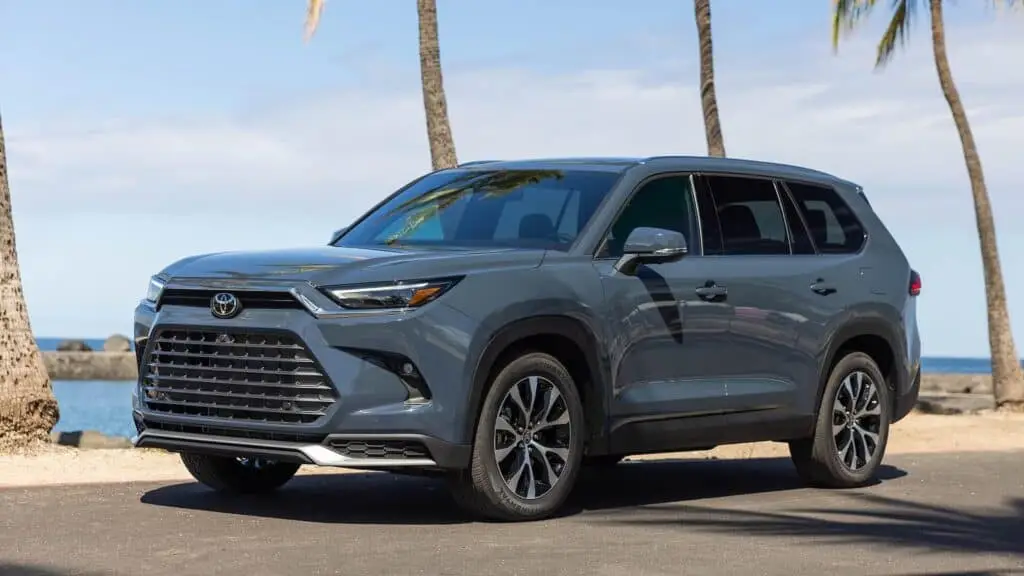
Highway performance in the Highlander Hybrid reveals sophisticated energy management that maximizes engine-off operation. During steady cruising, the vehicle can maintain highway speeds using minimal engine input, often cycling the engine on and off based on load demands and battery state of charge.
The SUV’s aerodynamic design, while not as efficient as a sedan, still allows for effective coasting with the engine completely off. The regenerative braking system in the Highlander Hybrid is calibrated to provide the SUV-appropriate brake feel that drivers expect while maximizing energy recovery.
The system’s ability to capture energy during deceleration is particularly effective given the vehicle’s mass, allowing for significant energy recovery that extends electric-only operation periods. The brake pedal feel is natural and progressive, making the energy recovery process transparent to the driver.
Family-friendly features in the Highlander Hybrid are designed to complement the vehicle’s silent operation capabilities. The climate control system uses efficient electric heating and cooling to minimize engine engagement for comfort needs.
The rear seat entertainment systems and USB charging ports are powered by the hybrid battery, reducing alternator load and allowing for longer periods of engine-off operation.
Real-world driving scenarios showcase the Highlander Hybrid’s impressive ability to operate silently despite its size. In suburban driving conditions, the SUV can complete school runs, shopping trips, and errands with minimal engine engagement.
The vehicle’s ability to creep forward silently in drive-through lanes and parking situations is particularly appreciated by families who value the peaceful operation.
5 Hybrids with Notable Engine Noise
These intrusive hybrid vehicles generate frequent engine noise due to aggressive powertrain calibration and poorly integrated electric motor assistance that creates constant engine cycling, startup vibrations, and audible power transitions during normal driving operations.
Their problematic engineering includes oversensitive engine management systems, inadequate sound dampening materials, and abrupt power switching logic that amplifies the mechanical noise typically associated with internal combustion operation.
From unexpected engine startups during gentle acceleration to persistent idling during electric-capable driving scenarios, these hybrid systems demand attention through constant audible reminders of their mechanical complexity.
Owners discover that while these vehicles offer hybrid fuel economy benefits, their powertrain design creates a less refined driving experience with frequent engine intrusion and noticeable power delivery transitions that diminish the expected quiet operation of hybrid technology.
1. BMW i8 (2014-2020, Used Market)
The BMW i8 represents a fascinating paradox in hybrid vehicle design a car that combines cutting-edge electric technology with deliberately enhanced engine acoustics to create an engaging driving experience.
While no longer in production, the i8 remains available in the used market and stands as a unique example of how hybrid technology can be used to enhance rather than diminish the auditory experience of driving.
The i8’s approach to engine noise demonstrates that hybrid vehicles don’t have to sacrifice the emotional connection that comes from internal combustion sound.
The i8’s powertrain combines a 1.5-liter three-cylinder turbocharged engine with an electric motor to produce 369 horsepower, but the vehicle’s acoustic character is carefully orchestrated to emphasize the combustion engine’s presence.
BMW engineers deliberately tuned the exhaust system to produce a distinctive sound that evokes the brand’s motorsport heritage while incorporating active sound enhancement through the vehicle’s audio system. This creates an acoustic experience that’s more engaging than the engine’s small displacement would naturally produce.
The three-cylinder engine in the i8 produces a unique acoustic signature that BMW has amplified rather than muffled. The engine’s 120-degree firing order creates a distinctive rumble that’s enhanced by the carefully tuned exhaust system and resonance chambers.
When combined with the active sound enhancement system, the result is an engine note that provides constant auditory feedback to the driver, creating an engaging connection between throttle input and acoustic response.
BMW’s active sound design in the i8 uses the vehicle’s audio system to augment the natural engine sound, creating a more dramatic acoustic experience than the small three-cylinder would produce alone.
This system analyzes engine speed, load, and throttle position to generate complementary sound frequencies that are played through the cabin speakers. The result is an immersive acoustic environment that makes every acceleration feel dramatic and engaging.
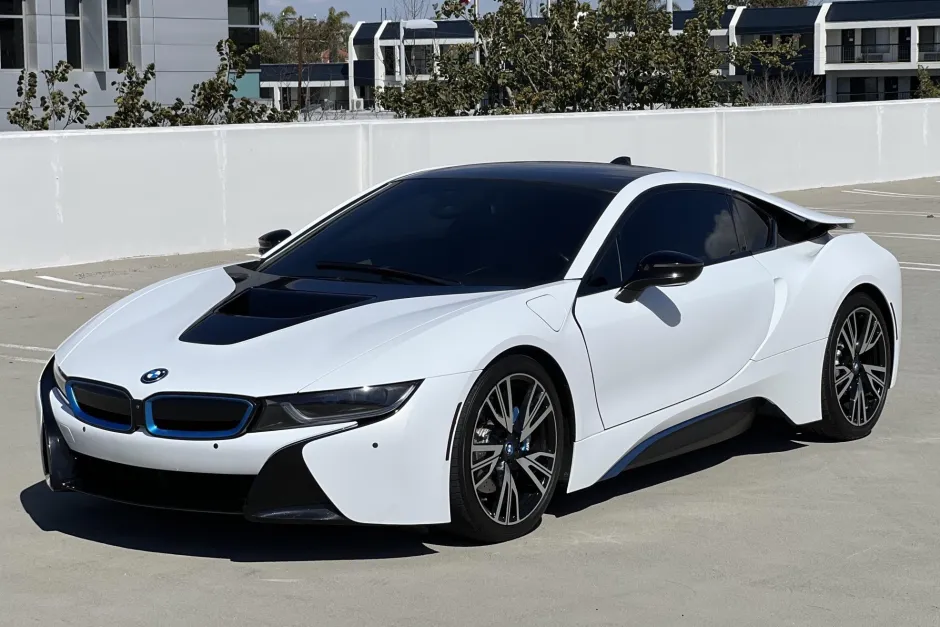
The i8’s sport exhaust system features electronically controlled valves that can modify the acoustic character based on driving mode. In Sport mode, the valves open to allow more sound to escape, creating a more aggressive exhaust note that emphasizes the engine’s presence.
The system is designed to provide maximum acoustic engagement during spirited driving while maintaining reasonable noise levels during cruising. This variable exhaust technology allows the driver to choose their preferred level of engine noise.
The vehicle’s carbon fiber construction contributes to its acoustic character by providing less sound deadening than traditional steel construction. This design choice allows more engine and exhaust noise to enter the cabin, creating a more immersive driving experience.
The strategic placement of sound-deadening materials ensures that wanted sounds (engine and exhaust) are preserved while unwanted noise (wind and road) is minimized.
Real-world driving in the i8 provides constant acoustic feedback from the powertrain. The engine noise is present during all phases of operation, from idle to redline, creating a continuous connection between the driver and the combustion engine.
Even when the electric motor is providing assistance, the engine sound remains prominent, ensuring that the hybrid system enhances rather than replaces the traditional sports car experience.
The i8’s acoustic design extends beyond just the engine to include other vehicle systems. The electric motor produces a subtle but audible whine during acceleration, adding another layer to the vehicle’s sound signature.
The combination of electric motor whine, three-cylinder engine note, and exhaust sound creates a unique acoustic fingerprint that’s immediately recognizable as the i8.
2. Lexus LC 500h (2024-2025)
The Lexus LC 500h represents the pinnacle of luxury hybrid grand touring, combining a naturally aspirated V6 engine with sophisticated hybrid technology while maintaining the acoustic drama that defines the luxury sports car experience.
Unlike many hybrids that prioritize silence, the LC 500h celebrates engine sound as an integral part of the driving experience, using advanced acoustic engineering to enhance rather than muffle the combustion engine’s natural voice.
The LC 500h’s powertrain features a 3.5-liter naturally aspirated V6 engine combined with a multi-stage hybrid system that produces 354 horsepower.
The naturally aspirated engine provides a linear power delivery and distinctive sound character that’s fundamentally different from turbocharged alternatives.
Lexus has deliberately preserved and enhanced this acoustic signature, recognizing that engine sound is a crucial component of the luxury sports car experience.
Lexus’s approach to acoustic design in the LC 500h involves sophisticated sound tuning that amplifies the desirable frequencies while filtering out unwanted noise.
The vehicle features an active sound control system that uses microphones to monitor cabin acoustics and speakers to enhance the engine’s natural sound.
This system doesn’t artificially generate sound but rather amplifies and refines the V6’s natural acoustic signature, creating a more dramatic and engaging auditory experience.
The exhaust system in the LC 500h is specifically designed to maximize acoustic drama while maintaining luxury car refinement. The system features multiple resonance chambers and carefully tuned pipe lengths that enhance the V6’s natural harmonics.
The exhaust note changes character based on engine speed and load, providing constant acoustic feedback that connects the driver to the powertrain’s operation.
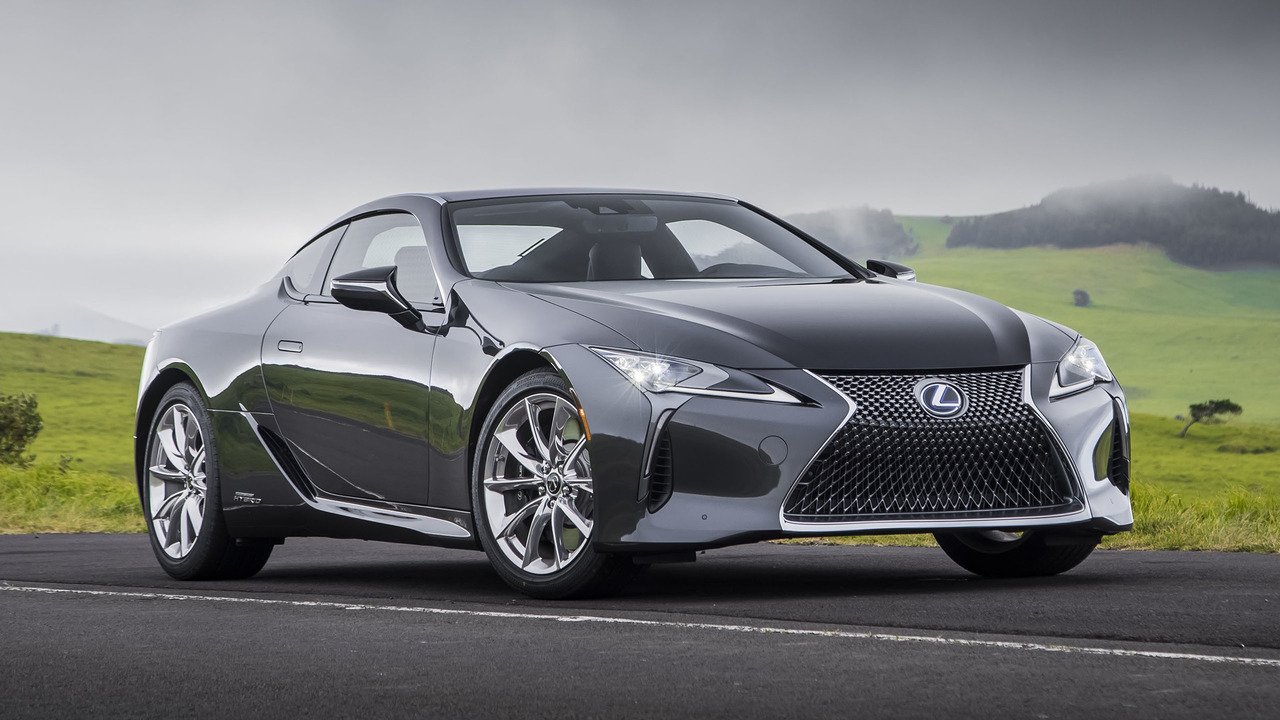
The sound is particularly engaging during acceleration, where the V6’s natural crescendo is preserved and enhanced. The LC 500h’s multi-stage hybrid system is unique in that it maintains engine engagement across a wider range of operating conditions than typical hybrids.
While the system can operate in electric-only mode at very low speeds, the transition to engine operation happens early and frequently, ensuring that the driver regularly experiences the V6’s acoustic signature. This design philosophy prioritizes driver engagement over maximum fuel efficiency.
Interior acoustic engineering in the LC 500h focuses on enhancing wanted sounds while controlling unwanted noise. The cabin features carefully placed sound-deadening materials that reduce wind and road noise while allowing engine and exhaust sounds to enter the cabin in a controlled manner.
The result is an acoustic environment where the engine’s voice is clearly audible and emotionally engaging without being overwhelming or fatiguing during long drives.
The vehicle’s driving modes significantly affect its acoustic character, with Sport+ mode providing the most aggressive engine sound. In this mode, the hybrid system keeps the engine running more frequently, the exhaust valves open for maximum sound transmission, and the active sound control system amplifies the most engaging frequencies.
The result is an acoustic experience that rivals dedicated sports cars while maintaining the efficiency benefits of hybrid technology. Real-world driving in the LC 500h provides a constantly evolving acoustic experience.
The engine sound changes with driving conditions, throttle input, and hybrid system operation, creating a dynamic soundtrack that enhances the driving experience. Even during routine driving, the V6’s presence is clearly audible, ensuring that the connection between driver and powertrain is maintained throughout the journey.
3. Acura NSX (2017-2022, Used Market)
The Acura NSX represents the ultimate expression of hybrid technology applied to supercar performance, where engine noise isn’t just preserved but elevated to an art form.
This mid-engine hybrid supercar combines a twin-turbocharged V6 with three electric motors to create 573 horsepower, but its acoustic design is equally sophisticated, ensuring that the combustion engine’s voice remains the dominant character in the vehicle’s sound signature.
The NSX demonstrates how hybrid technology can amplify rather than diminish the emotional impact of engine sound. The NSX’s 3.5-liter twin-turbocharged V6 engine produces a distinctive acoustic signature that’s enhanced by the vehicle’s mid-engine placement and sophisticated exhaust system.
The engine’s location directly behind the driver creates an intimate acoustic connection that’s unique among hybrid vehicles. Every throttle input, every gear change, and every engine revolution is audibly communicated to the driver with an intensity that rivals the most engaging traditional supercars.
Acura’s approach to acoustic design in the NSX involves minimal sound deadening in strategic areas to maximize the engine’s acoustic presence. The mid-engine configuration naturally places the combustion engine in close proximity to the cabin, and Acura has carefully balanced sound transmission to ensure that the engine’s voice is clearly audible without becoming overwhelming.
The result is an acoustic environment where the twin-turbo V6 dominates the auditory experience. The NSX’s exhaust system is a masterpiece of acoustic engineering, featuring carefully tuned resonance chambers and variable exhaust valves that modify the sound character based on driving mode and engine load.
The system produces a complex harmonic structure that changes with engine speed, creating a constantly evolving soundtrack that provides continuous feedback about the powertrain’s operation.

The exhaust note is particularly engaging during high-RPM operation, where the V6’s natural voice becomes most dramatic. The vehicle’s hybrid system is designed to complement rather than mask the engine’s acoustic signature.
While the three electric motors provide substantial additional power, they operate silently, allowing the combustion engine to remain the dominant acoustic element.
The electric motors’ instant torque delivery creates dramatic acceleration that’s accompanied by the V6’s rising crescendo, creating a unique combination of electric performance and combustion engine drama.
Track mode in the NSX transforms the vehicle’s acoustic character, opening exhaust valves and modifying the hybrid system’s operation to maximize engine engagement.
In this mode, the V6 remains active across a wider range of operating conditions, ensuring that the driver experiences the full acoustic spectrum of the twin-turbocharged engine.
The sound becomes more intense and immediate, creating an acoustic experience that matches the vehicle’s track-focused performance capabilities.
The NSX’s acoustic design extends beyond just volume to include the quality and character of the engine sound. The twin-turbo V6 produces a complex harmonic structure that includes the whistle of the turbochargers, the mechanical noise of the valvetrain, and the resonance of the exhaust system.
This acoustic complexity creates a rich, engaging sound that provides constant feedback about the engine’s operation and enhances the overall driving experience.
Real-world driving in the NSX provides an immersive acoustic experience that constantly reminds the driver of the combustion engine’s presence.
Whether cruising on the highway or accelerating through gears, the V6’s voice is always audible and engaging. The hybrid system’s electric assistance is felt rather than heard, allowing the traditional supercar acoustic experience to remain intact while benefiting from the performance enhancement of electric power.
4. Toyota GR Corolla Hybrid (Conceptual Future Model)
While the Toyota GR Corolla Hybrid doesn’t currently exist in production, it represents the logical evolution of Toyota’s performance hybrid strategy, combining the brand’s hybrid expertise with the emotional engagement of performance-focused engine sound.
This conceptual vehicle would demonstrate how hybrid technology can be applied to enthusiast-focused cars while maintaining the acoustic character that performance drivers demand. The approach would prioritize driver engagement through sound while leveraging hybrid assistance for enhanced performance.
The conceptual GR Corolla Hybrid would likely feature Toyota’s proven hybrid technology paired with a turbocharged three-cylinder engine optimized for both performance and acoustic engagement.
The three-cylinder configuration would provide a distinctive sound character that’s unlike typical four-cylinder engines, with a unique firing order that creates an engaging acoustic signature.
The hybrid system would be tuned to maintain engine engagement during spirited driving while providing electric assistance for enhanced performance.
Toyota’s approach to acoustic design in a performance hybrid would likely emphasize the preservation and enhancement of engine sound rather than sound dampening.
The vehicle would feature a sport-tuned exhaust system with variable valves that can modify the acoustic character based on driving mode. The exhaust would be designed to amplify the three-cylinder’s natural harmonics while adding the complexity that comes from turbocharger integration.
The hybrid system in a performance-focused application would be calibrated differently than efficiency-focused hybrids. Rather than maximizing electric-only operation, the system would prioritize keeping the engine engaged during performance driving to maintain the acoustic connection between driver and powertrain.
The electric motor would provide instantaneous torque fill to eliminate turbo lag while preserving the engine’s acoustic signature throughout the rev range.
Active sound enhancement would likely play a role in the GR Corolla Hybrid’s acoustic design, using the vehicle’s audio system to amplify and refine the engine’s natural sound.
This system would analyze engine operation and enhance the most engaging frequencies while filtering out unwanted noise. The result would be an acoustic experience that’s more dramatic and engaging than the small-displacement engine would naturally produce.
The vehicle’s sport exhaust system would feature electronically controlled valves that open in Sport mode to allow maximum sound transmission. The exhaust routing would be optimized for acoustic drama, with carefully tuned resonance chambers that enhance the three-cylinder’s natural sound character.
The system would provide the acoustic feedback that performance drivers expect while maintaining reasonable noise levels for daily driving. Interior acoustic design would focus on creating an engaging cockpit environment where engine sound is clearly audible and emotionally connecting.
The cabin would feature minimal sound deadening in strategic areas to allow engine noise to enter while controlling wind and road noise. The result would be an acoustic environment that puts the driver in direct communication with the powertrain’s operation.
Driving modes would significantly affect the vehicle’s acoustic character, with Normal mode providing refined operation and Sport mode unleashing the full acoustic potential of the powertrain.
In Sport mode, the hybrid system would maintain engine engagement more frequently, the exhaust valves would open for maximum sound transmission, and the active sound enhancement would amplify the most engaging frequencies.
5. Honda Civic Type R Hybrid (Conceptual Future Model)
The Honda Civic Type R Hybrid represents the potential future of performance hybrids, where electric assistance enhances rather than compromises the visceral driving experience that Type R enthusiasts demand.
While this vehicle doesn’t currently exist, it would represent Honda’s approach to combining their advanced hybrid technology with the uncompromising performance focus that defines the Type R brand. The acoustic design would be crucial to maintaining the Type R’s character while incorporating hybrid efficiency.
The conceptual Civic Type R Hybrid would likely feature Honda’s i-MMD hybrid system paired with a high-performance turbocharged engine specifically tuned for acoustic engagement.
The engine would be designed to produce the aggressive, race-inspired sound signature that Type R customers expect, with the hybrid system providing electric assistance without masking the combustion engine’s voice.
The combination would create a unique acoustic experience that blends traditional performance car sound with modern hybrid technology. Honda’s approach to performance hybrid acoustics would emphasize the preservation of the Type R’s signature engine note while adding the complexity that comes from electric assistance.
The vehicle would feature an aggressive exhaust system with large-diameter piping and minimal sound deadening to maximize the engine’s acoustic presence. The exhaust note would be tuned to produce the sharp, aggressive sound that defines the Type R experience.
The hybrid system would be calibrated specifically for performance applications, with the electric motors providing instantaneous torque to eliminate turbo lag while maintaining engine engagement throughout the rev range.
Rather than maximizing electric-only operation, the system would prioritize keeping the combustion engine active during performance driving to preserve the acoustic connection that’s crucial to the Type R experience.
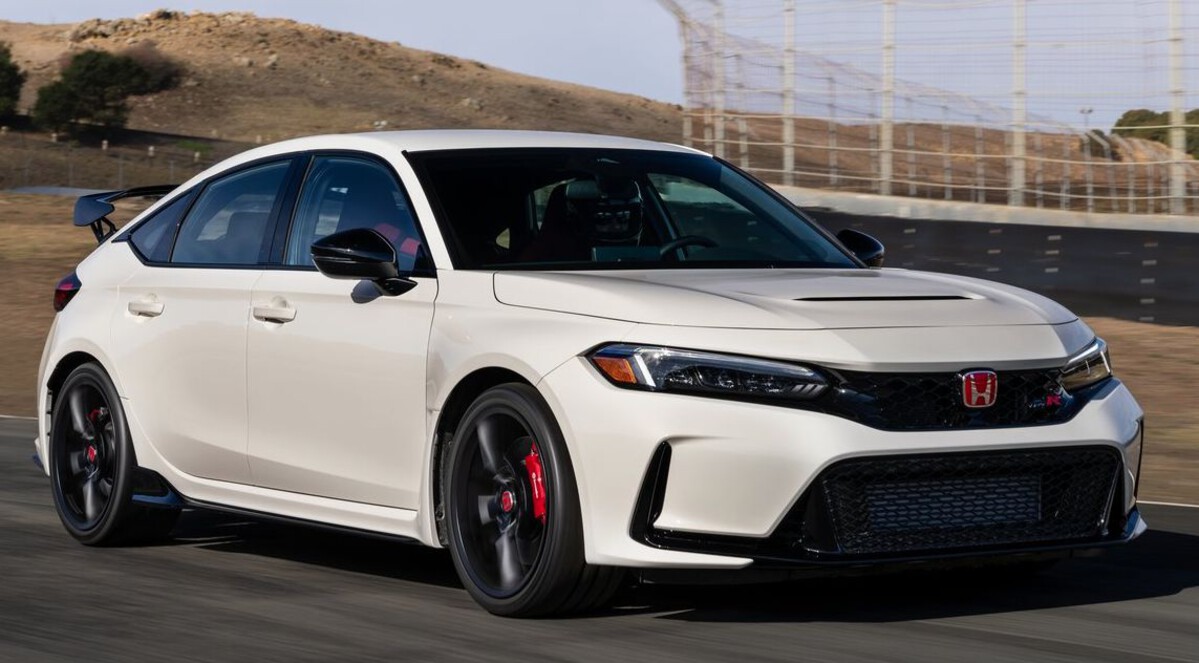
Active exhaust valves would play a crucial role in the Type R Hybrid’s acoustic design, opening in performance modes to unleash the full acoustic potential of the powertrain.
The valves would be controlled by the vehicle’s drive mode system, remaining closed during normal driving for reasonable noise levels but opening fully in Type R mode for maximum acoustic engagement. The exhaust system would feature multiple resonance chambers tuned to enhance the engine’s natural harmonics.
The vehicle’s acoustic design would extend beyond just the exhaust to include intake sound enhancement. The Type R Hybrid would likely feature a sport intake system designed to amplify the turbocharger’s whistle and the engine’s induction noise.
This intake sound would complement the exhaust note to create a comprehensive acoustic experience that provides constant feedback about the powertrain’s operation.
Interior acoustic engineering would focus on creating a race-inspired cockpit environment where every aspect of the powertrain’s operation is audibly communicated to the driver.
The cabin would feature minimal sound deadening to allow maximum engine and exhaust noise transmission while using strategic placement of acoustic materials to control unwanted wind and road noise.
The result would be an immersive acoustic environment that puts the driver in direct communication with the hybrid powertrain. The Type R Hybrid’s driving modes would dramatically affect its acoustic character, with Comfort mode providing reasonable noise levels for daily driving and Type R mode unleashing the full acoustic potential of the system.
In the most aggressive mode, the hybrid system would maintain high engine engagement, exhaust valves would open completely, and the intake system would allow maximum induction noise.
The combination would create an acoustic experience that rivals or exceeds traditional high-performance engines while benefiting from hybrid assistance.
Also Read: 5 Trucks With Best OEM Navigation Maps And 5 Needing Updates

